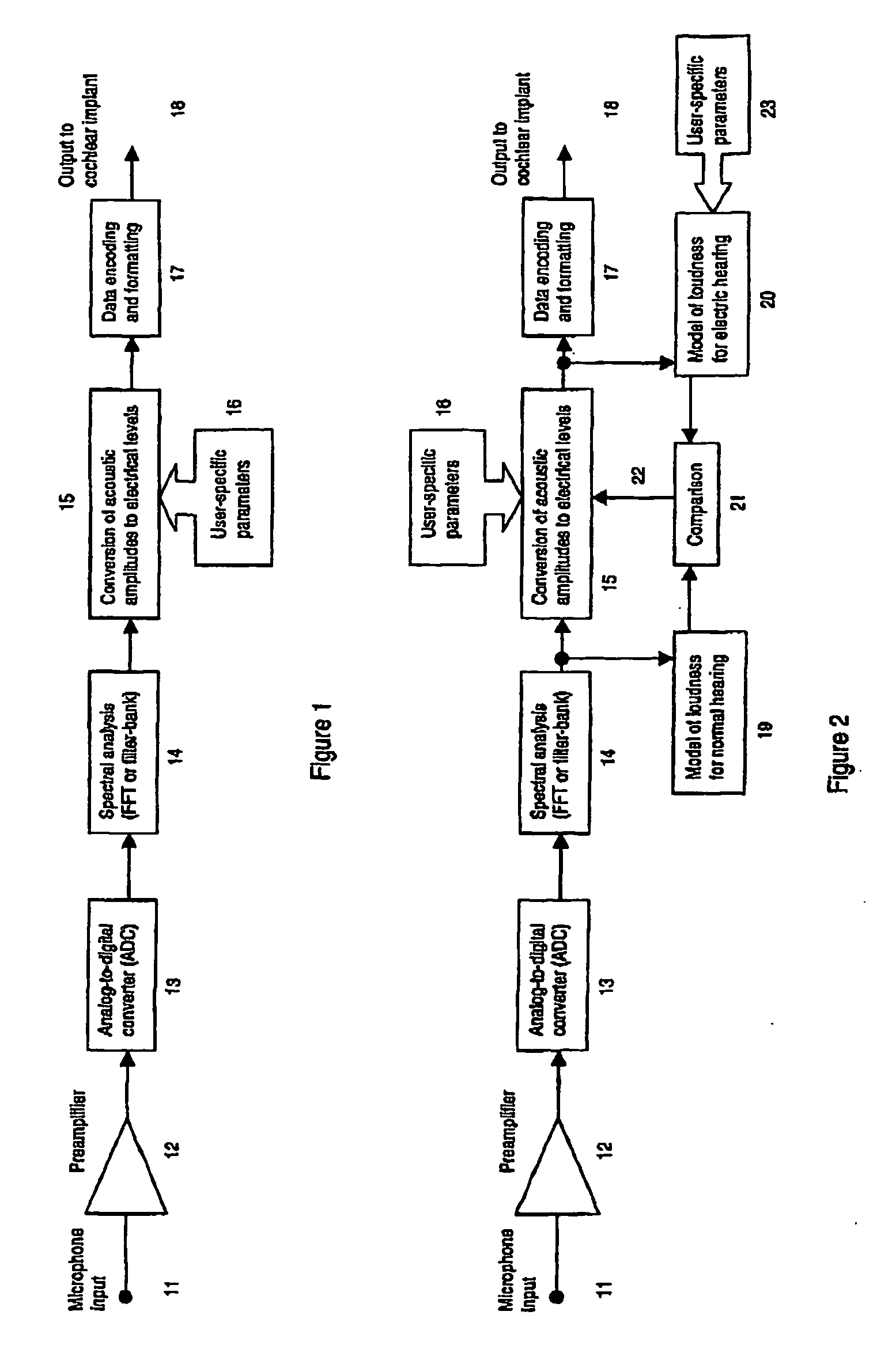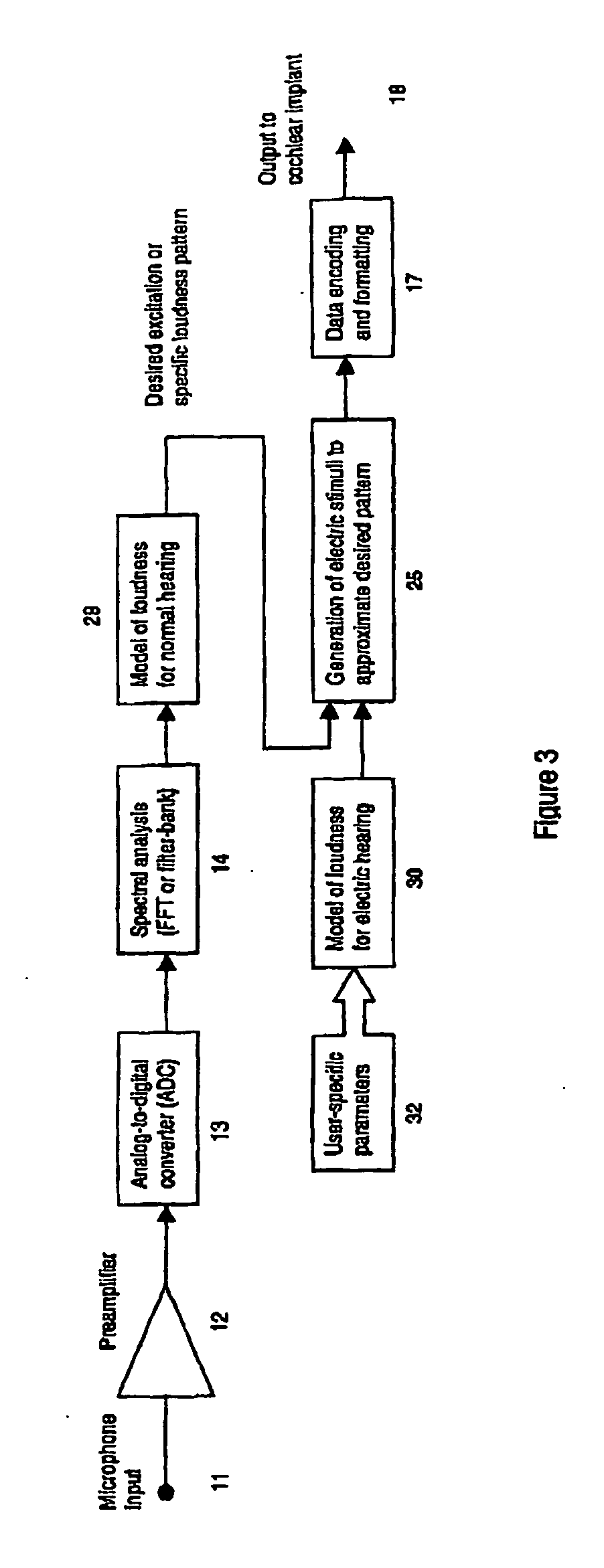Sound-processing strategy for cochlear implants
a cochlear implant and processing strategy technology, applied in the field of cochlear implant systems, can solve the problems of inability to accurately convey the relative loudness of the relative loudness of the electrically stimulated hearing using the present approach, the distortion of the amplitude envelope shape, and the output of the processor is too loud, so as to reduce normalising the overall loudness, and reducing the effect of background nois
- Summary
- Abstract
- Description
- Claims
- Application Information
AI Technical Summary
Benefits of technology
Problems solved by technology
Method used
Image
Examples
Embodiment Construction
[0013] Illustrative embodiments of the present invention will now be described with reference to the accompanying figures, in which
[0014]FIG. 1 is a block diagram of prior art arrangement;
[0015]FIG. 2 is a block diagram of a first implementation; and
[0016]FIG. 3 is a block diagram of a second implementation.
[0017] The present invention will be described with reference to particular approaches to speech processing. However, it will be appreciated that the present invention can be applied to many different speech processing strategies, as an addition to assist in providing an outcome where the percepts provided to the user are optimal, particularly when many stimuli are applied within a short time interval and / or to multiple electrode positions. Further to this, each aspect of the present invention can be applied to existing speech processing schemes either separately or in combination to enhance the operational characteristics of such schemes.
[0018] The scheme described below inc...
PUM
 Login to View More
Login to View More Abstract
Description
Claims
Application Information
 Login to View More
Login to View More - R&D
- Intellectual Property
- Life Sciences
- Materials
- Tech Scout
- Unparalleled Data Quality
- Higher Quality Content
- 60% Fewer Hallucinations
Browse by: Latest US Patents, China's latest patents, Technical Efficacy Thesaurus, Application Domain, Technology Topic, Popular Technical Reports.
© 2025 PatSnap. All rights reserved.Legal|Privacy policy|Modern Slavery Act Transparency Statement|Sitemap|About US| Contact US: help@patsnap.com



